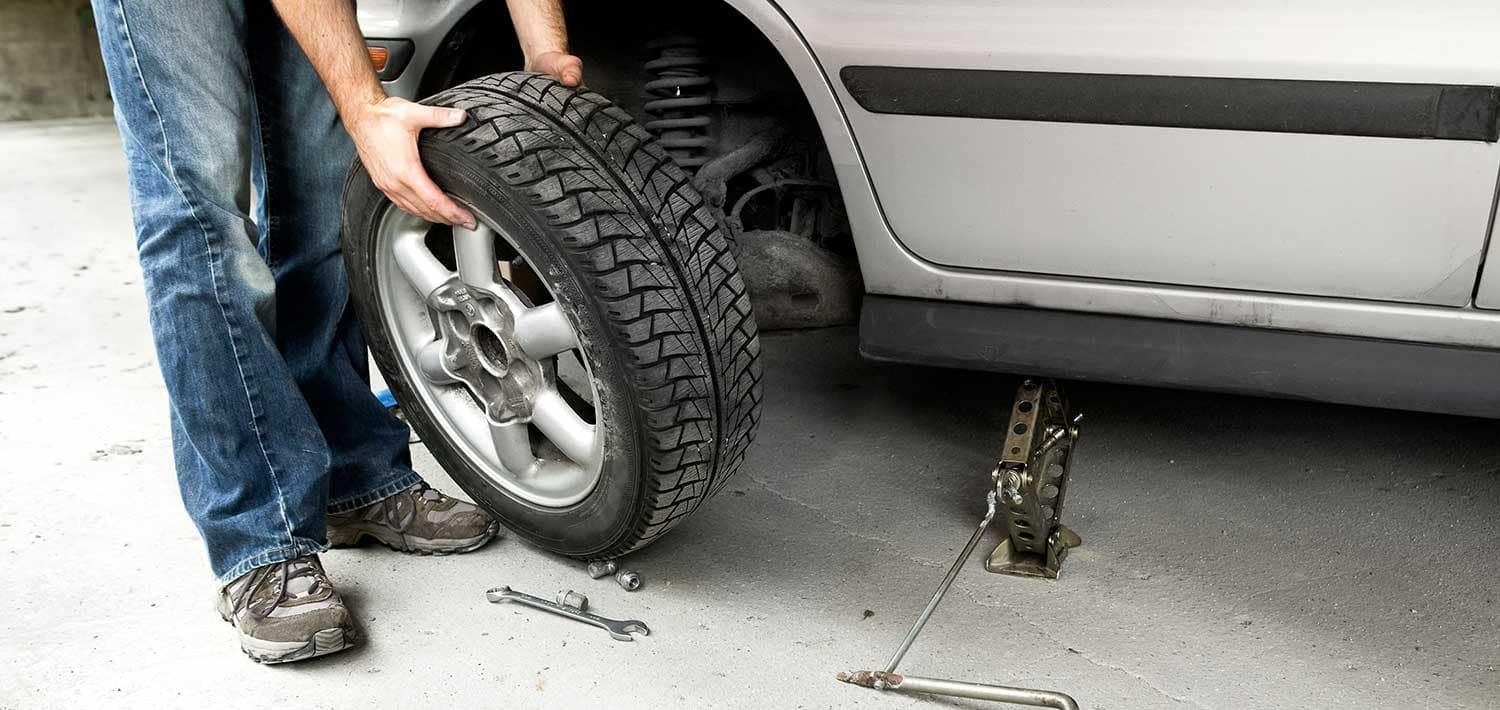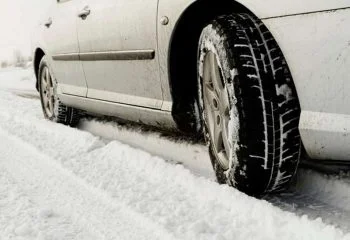Do you know how long does it take to change a tire? What about the cost? Or how to do it yourself? In this blog post, we’ll break down all of that information for you.
It usually takes about 10-15 minutes to change a tire, but it can take up to 40-60 minutes to change 4 tires.
Changing a tire can be a daunting task, but it’s not as difficult as you may think. We’ll walk you through each step so that you can feel confident in your ability to change a tire on your own.
Plus, we’ll give you an estimate of how much it costs to have someone do it for you. So, whether you’re an experienced mechanic or a complete novice, read on for everything you need to know about changing a tire!
What's in this post?
How long does it take to change a tire?
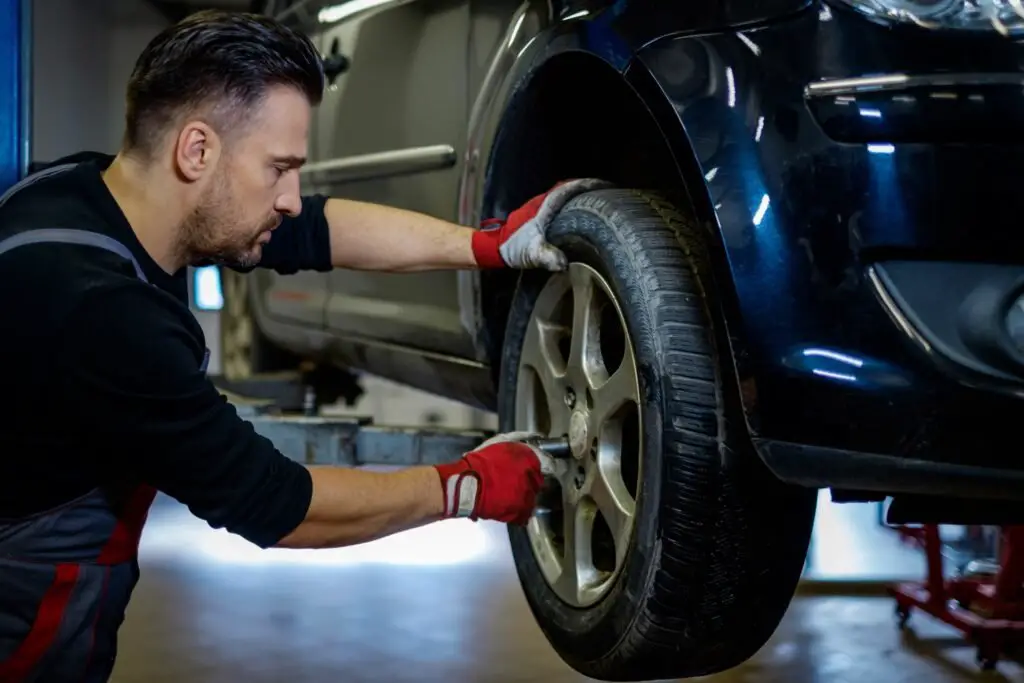
On average, it takes about 15 minutes to change a tire and about 60 minutes to change 4 tires. This includes the time it takes to loosen the lug nuts, remove the old tire, put on the new tire, and tighten the lug nuts.
If you’ve never changed a tire before, it’s best to give yourself an extra 10-15 minutes. And if you’re changing a tire in an emergency situation, it’s important to stay calm and take your time. Rushing can lead to mistakes.
A professional mechanic can usually change a tire in about 10 minutes and 40 minutes for 4 tires. This includes the time it takes to remove the old tire, inspect the wheel for damage, and then mount and inflate the new tire.
Of course, the actual time may vary depending on the type of vehicle and the condition of the wheels. If the wheels are rusted or damaged, it may take longer to remove the old tire.
In addition, some vehicles have special features that can make changing a tire more difficult, such as a spare tire that is located underneath the vehicle.
Overall, however, a professional should be able to change a tire fairly quickly.
How much does it cost to change tires?
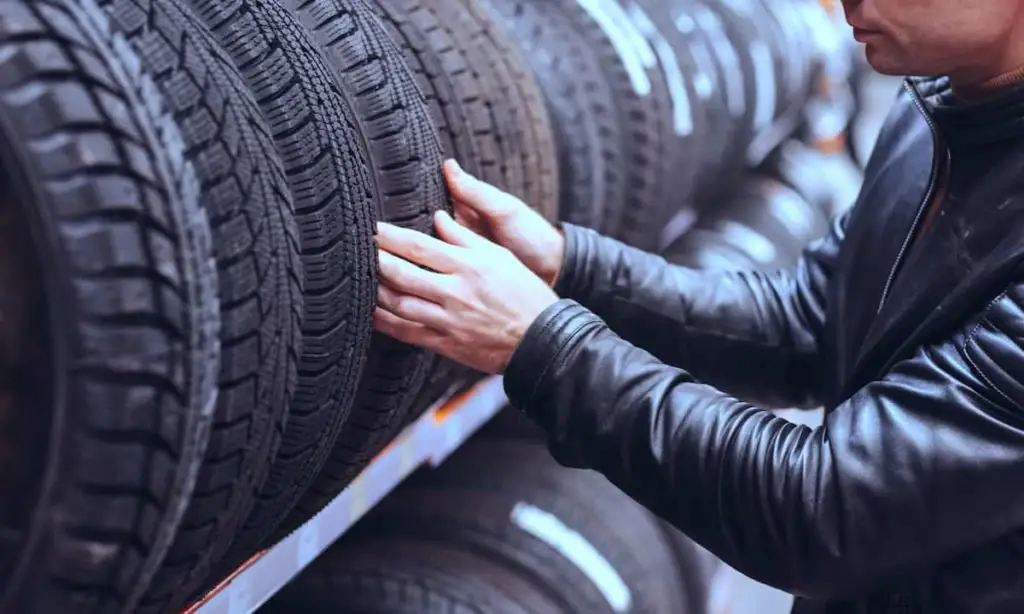
Changing your own tires can be a great way to save money, but it’s important to know the costs involved. For most people, the biggest expense will be the cost of the tire itself.
Depending on the make and model of your car, new tires can range in cost from $50 to $300 each. In addition, you’ll need to purchase a few tools, including a lug wrench and a jack. These can be found at most hardware stores for around $30.
Finally, you’ll need to factor in the cost of your time. If it takes you 1-2 hours to change all four tires, that’s equivalent to $25 per hour.
All told, changing your own tires can save you around $100 compared to taking your car to a professional.
However, it’s important to consider whether you have the time and the skills needed to do the job right. Otherwise, you may end up doing more harm than good.
The cost of changing tires by a professional mechanic will vary depending on the type of vehicle and the number of tires that need to be changed.
Most mechanics will charge a flat rate for labor, which can range from $60 to $100 per hour. In addition, there will be a fee for the disposal of the old tires.
The total cost of changing four tires, including labor and disposal fees, can range from $200 to $400. If you need to have your tires changed more frequently, it is important to factor in the cost of regular maintenance.
However, many mechanics offer discounts for customers who have their work done on a regular basis. As a result, changing your own tires can be a significant saving over time.
Useful read: What is a Tire Sidewall Damage?
When you should change your tires?
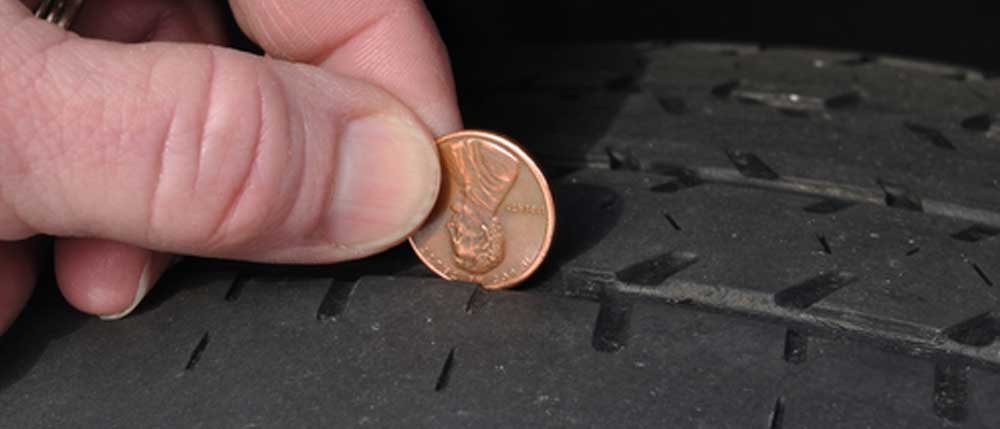
Depending on the type of vehicle you have, your tires should be changed anywhere between 25,000 to 50,000 miles. However, there are a few other factors you should take into account when deciding whether or not it’s time for a change.
For starters, how well have you been taking care of your tires? Have you been regularly checking the air pressure and alignment? If not, that could shorten their lifespan.
If you live in an area with harsh winters or a lot of potholes, that can also cause wear and tear that will require more frequent changes.
Ultimately, it’s important to consult with your mechanic to get their professional opinion on when the best time to change your tires would be.
There are also a few signs to watch out for:
- Take a look at the tread depth: If the tread is wearing down too low, it will be more difficult for the tires to grip the road, which can lead to accidents.
- Pay attention to the way the car is handling: If the car starts to feel unstable or veers off course easily, it could be a sign that the tires are losing their grip.
- Keep an eye on the tire pressure: If it drops too low, it can cause the tire to overheat or even explode. So if you notice any of these signs, it’s time to head to the nearest tire shop.
Useful read: How Long Can You Drive with Wire Showing on Tire
How to change a tire yourself step by step

If you find yourself with a flat tire, it is important to know how to change it yourself. While it is always best to call a tow truck or road service in the event of a breakdown, knowing how to change a tire can be a useful skill in many situations. Here are the steps you need to follow to change a tire:
Change a tire with a jack
What you will need:
- A lug wrench
- A jack
- A spare tire that is in good condition
- A few rags
How to do it:
- The first step is to park the car in a safe location. If you’re on the side of the road, make sure to pull over as far as possible and turn on your hazard lights.
- Next, use the lug wrench to loosen the lug nuts on the wheel that needs to be changed. Be sure not to remove them completely, just loosen them so they can be turned by hand.
- Now it’s time to lift up the car. Locate the jack points on your car, these are usually located near the corners of the frame. Once you’ve found the jack points, place the jack under the car and slowly raise it until the tire is off the ground.
- Once the tire is off the ground, use the lug wrench to take off the lug nuts. Put them in a safe place so you don’t lose them.
- Now you can take off the old tire and put on the new one. Be sure to line up the holes correctly so you don’t have to force it on.
- Once the new tire is in place, put the lug nuts back on and tighten them as much as you can by hand.
- Now you can lower the car back down to the ground. Once the car is back on the ground, use the lug wrench to tighten the lug nuts as much as possible.
- Finally, give each nut an extra quarter-turn with the wrench to make sure they’re secure.
And that’s it! You’ve successfully changed your own tire. Just be sure to check the pressure and alignment before getting back
Change a tire without a jack
If you’re stranded on the side of the road with a flat tire, you may be tempted to call for a tow truck. However, changing a tire is actually a fairly simple process that anyone can do with a few basic tools. Here’s how to change a tire without a jack:
What you will need:
- A lug wrench
- A few rags
- A spare tire
How to do it:
- Park your car on level ground and turn off the engine. Place a brick or piece of wood behind one of the back tires to prevent the car from rolling while you’re working.
- Loosen the lug nuts on the flat tire using a wrench. Do not remove them completely, just loosen them enough so you can take them off by hand later on.
- Place the spare tire on the wheel bolt face up so the hole in the center lines up with the bolt holes in the wheel. Thread the lug nuts onto the bolts by hand, until they are finger-tight.
- Use the wrench to tighten the lug nuts as much as possible. Be sure to alternate sides as you’re tightening to ensure that the tire is evenly secured.
- Lower the car back down and remove the jack. Finish tightening the lug nuts with the wrench.
That’s all there is to it!
What to do after changing tires?
Once you’ve changed the tire, it’s important to check the pressure and alignment. If the tire is significantly low on air, it could cause problems down the road. The same goes for misaligned tires.
To check the pressure, follow these steps:
- First, check your vehicle’s owner manual to find the recommended tire pressure for your tires.
- Next, use a tire gauge to check the pressure of all four tires. If any of the tires are low, add air until they reach the recommended level.
- Once all four tires are at the proper pressure, take your car for a test drive to make sure that the new tire is functioning properly.
- If you notice any unusual sounds or vibrations, stop driving immediately and have your car checked by a mechanic.
It’s also important to check the alignment. If the alignment is off, it can cause the car to veer to one side or the other, making it difficult to drive. Fortunately, there are a few easy ways to check alignment at home.
- First, park the car on a level surface and measure the distance between the tires and the curb.
- Next, measure the distance between the center of the steering wheel and the edge of the pavement.
- Finally, put a piece of chalk on each tire and make sure that all four marks line up evenly. If they don’t, then the alignment is off and needs to be adjusted.
If everything looks good, you’re all set! Just be sure to keep an eye on the spare tire and make sure it is properly inflated. You never know when you might need it again.
Tips for keeping your tires in good condition?
There are a few things you can do to keep your tires in good condition and prevent flats:
- Check the pressure regularly: Use a tire pressure gauge to check the pressure of your tires at least once a month. Keep in mind that the ideal pressure will vary depending on the type of tire you have.
- Inflate your tires properly: Make sure you’re using the right amount of air when inflating your tires. Overinflating can cause premature wear, while underinflating will make your tires more likely to flat.
- Avoid potholes: Driving over potholes can cause damage to your tires, so try to avoid them if possible. If you can’t avoid them, slow down as much as possible before driving over them.
- Rotate your tires: Have your tires rotated every 5,000 miles or so. This will help ensure even wear and prevent flats. (See How Much Is a Tire Rotation: Cost Break Down!)
- Check for tread wear: Use a Penny test to check the tread depth of your tires. If the tread is less than 1/16 of an inch, it’s time to replace your tires.
FAQs
Should you change all tires at once?
It’s generally recommended that you change all four tires on your vehicle at the same time. Because it helps to ensure that all four tires are evenly worn. This is important because unevenly worn tires can negatively impact handling and braking.
Also, changing all four tires at once helps to ensure that all four tires are the same size and type. This is important because different sized or types of tires can also negatively impact handling and braking.
Finally, changing all four tires at once helps to ensure that all four tires have the same tread depth. This is important because tires with different tread depths can also cause handling and braking problems.
So, while it may be tempting to only change two tires at a time, it’s generally best to change all four.
Is it OK to buy 2 tires instead of 4?
It is perfectly fine to only buy two tires instead of four. While it is always recommended to have all four tires be the same brand, model, and size, as well as having the same tread depth, it is not necessary.
Just be sure to keep an eye on the other two tires and replace them when necessary. Also, be mindful of the fact that having mismatched tires can affect your vehicle’s handling.
Should I put new tires in the front or back?
It is generally recommended that new tires be placed on the back axle. Because the front tires play a larger role in steering, so they experience more wear and tear than the back tires.
This helps to ensure that the car will maintain its stability, it distribute the weight more evenly and prevents the car from veering, even as the front tires begin to show signs of wear.
Of course, there are exceptions to every rule, so be sure to consult with a professional before making any decisions about your tire change.
Do all 4 tires need to be the same brand?
While it is not necessary to have all four tires be the same brand, it is generally recommended by experts. Having all four tires be the same brand can help ensure consistency in performance and handling.
Additionally, it can provide peace of mind knowing that all of your tires were made by the same manufacturer and subject to the same quality control standards.
Overall, while you technically don’t need to have all four tires be the same brand, it is something that is worth considering if you want to help ensure the best possible performance for your vehicle.
Which front tire wears faster?
The left front tire typically wears out significantly faster than the others. When turning, the left front tire is more heavily loaded than any other tire on the vehicle.
The weight of the engine and transmission is transferred to the left front tire during a turn, and this additional weight puts more stress on the tire.
In addition, the left front tire is responsible for transmitting most of the steering force during a right turn.
To help extend the life of your tires, it is important to rotate them regularly. This will ensure that all four tires wear evenly and last for as long as possible.
Why are my front tires wearing out so fast?
There are several reasons why front tires may wear out more quickly than rear tires. One reason is that front-wheel drive vehicles tend to transfer more weight to the front wheels, causing them to bear more of the brunt of the road.
In addition, most vehicles have power steering, which puts additional strain on the front wheels. Turning also puts more stress on the front wheels, as they have to do most of the work when it comes to changing direction.
Finally, braking also takes its toll on front tires, as they are responsible for stopping the majority of the vehicle’s weight.
All of these factors can add up to front tires that wear out much faster than rear tires. If you’re concerned about your front tires wearing out too quickly, be sure to have them checked regularly and rotated when necessary.
Does highway driving wear tires faster?
Highway driving may cause tires to wear out more quickly than city driving. The main reason for this is the higher speeds involved in highway driving.
The faster a tire spins, the more friction it experiences, which can lead to heat build-up and increased wear. In addition, highway driving often involves making quick starts and stops, which can also put extra strain on tires.
As a result, it is important to check tire pressure and tread depth regularly when doing a lot of highway driving.
Do tires wear less on wet roads?
Tires typically wear less on wet roads than on dry roads. The main reason for this is that the water on the road surface helps to cool the tires and prevent heat build-up.
In addition, wet roads tend to be more forgiving than dry roads, so there is less chance of experiencing a sudden jolt or impact that can damage tires.
Of course, it is still important to drive carefully on wet roads and to avoid puddles and other obstacles that could cause damage to your tires.
Why are my tires slippery?
One possibility is that the treads are worn down and no longer have the same gripping power as they did when they were new.
Another feasible explanation is that the tires aren’t inflated to the proper levels. This can cause the treads to deflate and lose their grip on the road, which may lead to accidents.
Finally, it is also possible that your tires are simply too cold. Cold temperatures can make rubber harder and less flexible, which can reduce traction.
If you’re concerned about your tires being slippery, be sure to check the tread depth and inflation level regularly. You may also want to consider using tire chains or winter tires in cold weather.
How long does Walmart take to change tires?
Walmart a tire change service that typically takes 45 minutes to 4 hours, depending on how many cars are ahead of you in line.
So if you are in a hurry, it might be better to go somewhere else. But if you have the time, Walmart is a great option for getting your tires changed.
How long does Firestone take to change tires?
If you are lucky, they are able to change your tires within 45 minutes. However, if there are several cars in front of you, it may take up to 5 hours.
How long does Pep Boys take to change tires?
The time it takes to change a tire at Pep Boys varies depending on how many cars are ahead of you in line. However, the average time it takes is 45 minutes to an hour.
How long does Costco take to change tires?
While the exact wait time will depend on how many cars are ahead of you, in general you can expect to be in and out within 45 minutes to 2 hours. However, you can rest assured knowing that your car will be in good hands.
Why are all tires black?
The black color of tires is the result of the addition of carbon black. Carbon black is a stabilizing chemical compound that is added to the rubber that tires are made from.
The rubber that tires are sourced from is a milky white color, but the addition of carbon black makes the tire black.
In addition to carbon black, other polymers are combined with the rubber to create the tire’s tread compound. These polymers help to improve the tire’s grip and durability.
The combination of carbon black and other polymers makes tires more stable and resistant to wear and tear. As a result, tires tend to last longer and provide better performance.
Why are tires so expensive?
Tires are a crucial part of any vehicle, and they must be able to withstand a lot of wear and tear. As a result, tires are made from high-quality materials that can be quite expensive. The cost of raw materials has been rising in recent years and the production process is very energy-intensive, and the cost of energy is also on the rise.
In addition, tires must be designed for specific types of vehicles, which can also add to the cost. Lastly, the manufacturing process for tires is quite complex, and it requires special equipment and trained personnel.
All of these factors contribute to the high cost of tires. However, tires are essential for safe driving, and they can last for many years if they are properly maintained. As a result, most experts agree that tires are worth the investment.
Do new tires make a difference?
The main benefit of new tires is improved safety. Older tires may have less tread, which can make them more prone to skidding on wet roads. They may also be more likely to suffer a blowout at high speeds.
In addition, newer tires are often made from better materials that can resist wear and tear better than older tires. As a result, it is generally advisable to replace tires when they start to show signs of wear.
While new tires may not boost mileage significantly, they can provide other important benefits.
Do more expensive tires last longer?
The answer, unfortunately, is not as straightforward as a simple yes or no. In general, more expensive tires are made from higher quality materials and undergo stricter quality control, which does tend to make them more durable.
However, the difference in lifespan between a high-end tire and a budget tire is often fairly minimal. Ultimately, the longevity of a tire depends on a variety of factors, including driving habits, road conditions, and even weather.
As a result, it can be difficult to say definitively that one type of tire will last significantly longer than another. When making a decision, it is important to weigh all of these factors carefully in order to choose the tire that is best suited for your needs.
Can changing tires affect brakes?
Yes. This is because brakes rely on friction to work properly, and the amount of friction depends on the tread on the tire. When tires are worn down, they have less grip, which means that the brakes have to work harder to stop the car.
As a result, it is important to ensure that tires are changed before they get too worn down – not only for safety reasons, but also to help prolong the life of the brakes.
Do I need an alignment after change tires?
It is generally recommended that you have your vehicle’s alignment checked whenever you have new tires installed. This is because the process of mounting and dismounting new tires can disturb the alignment of your vehicle.
Even if your old tires were still in good condition, it’s possible that the alignment has been thrown off enough to cause problems with your new tires.
An alignment ensures that your vehicle’s wheels are properly aligned, which can help to improve fuel efficiency and extend the life of your tires.
Therefore, although it may not be strictly necessary to have an alignment after changing your tires, it is generally a good idea to do so.
Do new tires ride rough at first?
When you get new tires, you might notice that the ride feels rougher than usual. This is perfectly normal and is caused by the tire treads being stiffer than they are on older tires. As the tire treads start to wear down, they will become more flexible and the ride will become smoother.
In the meantime, you can help to break in your new tires by driving on smooth surfaces and avoiding sudden braking or acceleration. With a little time and care, your new tires will provide a comfortable ride for many miles to come.
Final thoughts
Changing a tire is a relatively easy task that can be done by most people with a little bit of instruction and practice.
In this blog post, we’ve outlined how long does it take to change a tire, the steps you need to take to change a tire, as well as the cost and time involved in doing so.
If you’re ever stranded on the side of the road with a flat tire, don’t panic – just follow these simple instructions and you’ll be back on your way in no time.
The average person can change a tire in about 12 minutes, not including the time it takes to lift the car. The cost of having someone else do it for you is about $50.
If you’re feeling adventurous, you can do it yourself for free. With the right tools and some practice, you can change your own tires in no time.
By following the steps outlined in this post, you should be able to change your own tire without any trouble.

